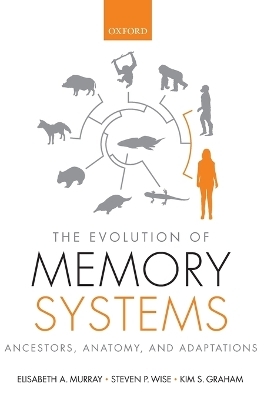
The Evolution of Memory Systems
Oxford University Press (Verlag)
978-0-19-968643-8 (ISBN)
Current theories about human memory have been shaped by clinical observations and animal experiments. This doctrine holds that the medial temporal lobe subserves one memory system for explicit or declarative memories, while the basal ganglia subserves a separate memory system for implicit or procedural memories, including habits. Cortical areas outside the medial temporal lobe are said to function in perception, motor control, attention, or other aspects of executive function, but not in memory.
'The Evolution of Memory Systems' advances dramatically different ideas on all counts. It proposes that several memory systems arose during evolution and that they did so for the same general reason: to transcend problems and exploit opportunities encountered by specific ancestors at particular times and places in the distant past.
Instead of classifying cortical areas in terms of mutually exclusive perception, executive, or memory functions, the authors show that all cortical areas contribute to memory and that they do so in their own ways-using specialized neural representations. The book also presents a proposal on the evolution of explicit memory. According to this idea, explicit (declarative) memory depends on interactions between a phylogenetically ancient navigation system and a representational system that evolved in humans to represent one's self and others. As a result, people embed representations of themselves into the events they experience and the facts they learn, which leads to the perception of participating in events and knowing facts.
'The Evolution of Memory Systems' is an important new work for students and researchers in neuroscience, psychology, and biology.
Elisabeth A. (Betsy) Murray was raised with her three brothers in Syracuse, New York. She received a B.S. in Biology from Bucknell University in Lewisburg, Pennsylvania and a Ph.D. in Physiology from the University of Texas Medical Branch at Galveston, Texas. Dr. Murray is an elected Fellow of the Association for Psychological Science, of the American Psychological Association, and of the American Association for the Advancement of Science. She currently heads the Laboratory of Neuropsychology at the National Institute of Mental Health in Bethesda, Maryland. Steven P. Wise received a B.A. in Biology from Dartmouth College and a Ph.D. from Washington University (St. Louis) in Biology. After a brief period of postdoctoral study, he had a 30-year career in neurophysiology at the National Institute of Mental Health in Bethesda and Poolesville, Maryland. Dr Wise served as Chief of the Laboratory of Neurophysiology and Chief of the Section on Neurophysiology of the Laboratory of Systems Neuroscience. Kim S. Graham received a B.Sc. In Biological Sciences from Edinburgh University, followed by a Ph.D. from Cambridge University in Psychology. She subsequently worked as a research scientist at the MRC Cognition and Brain Sciences for 12 years, prior to moving to Cardiff University in 2007, where she is currently a Professor of Cognitive Neuroscience.
PART I. FOUNDATIONS OF MEMORY SYSTEMS; PART II. ARCHITECTURE OF VERTEBRATE MEMORY; PART III. PRIMATE AUGMENTATIONS; PART IV. HOMININ ADAPTATIONS; PART V. DECONSTRUCTING AND RECONSTRUCTING MEMORY SYSTEMS
| Erscheinungsdatum | 05.11.2016 |
|---|---|
| Verlagsort | Oxford |
| Sprache | englisch |
| Maße | 178 x 253 mm |
| Gewicht | 1172 g |
| Themenwelt | Geisteswissenschaften ► Psychologie ► Allgemeine Psychologie |
| Geisteswissenschaften ► Psychologie ► Biopsychologie / Neurowissenschaften | |
| Geisteswissenschaften ► Psychologie ► Test in der Psychologie | |
| Naturwissenschaften ► Biologie ► Evolution | |
| Naturwissenschaften ► Biologie ► Humanbiologie | |
| Naturwissenschaften ► Biologie ► Zoologie | |
| ISBN-10 | 0-19-968643-2 / 0199686432 |
| ISBN-13 | 978-0-19-968643-8 / 9780199686438 |
| Zustand | Neuware |
| Haben Sie eine Frage zum Produkt? |
aus dem Bereich


